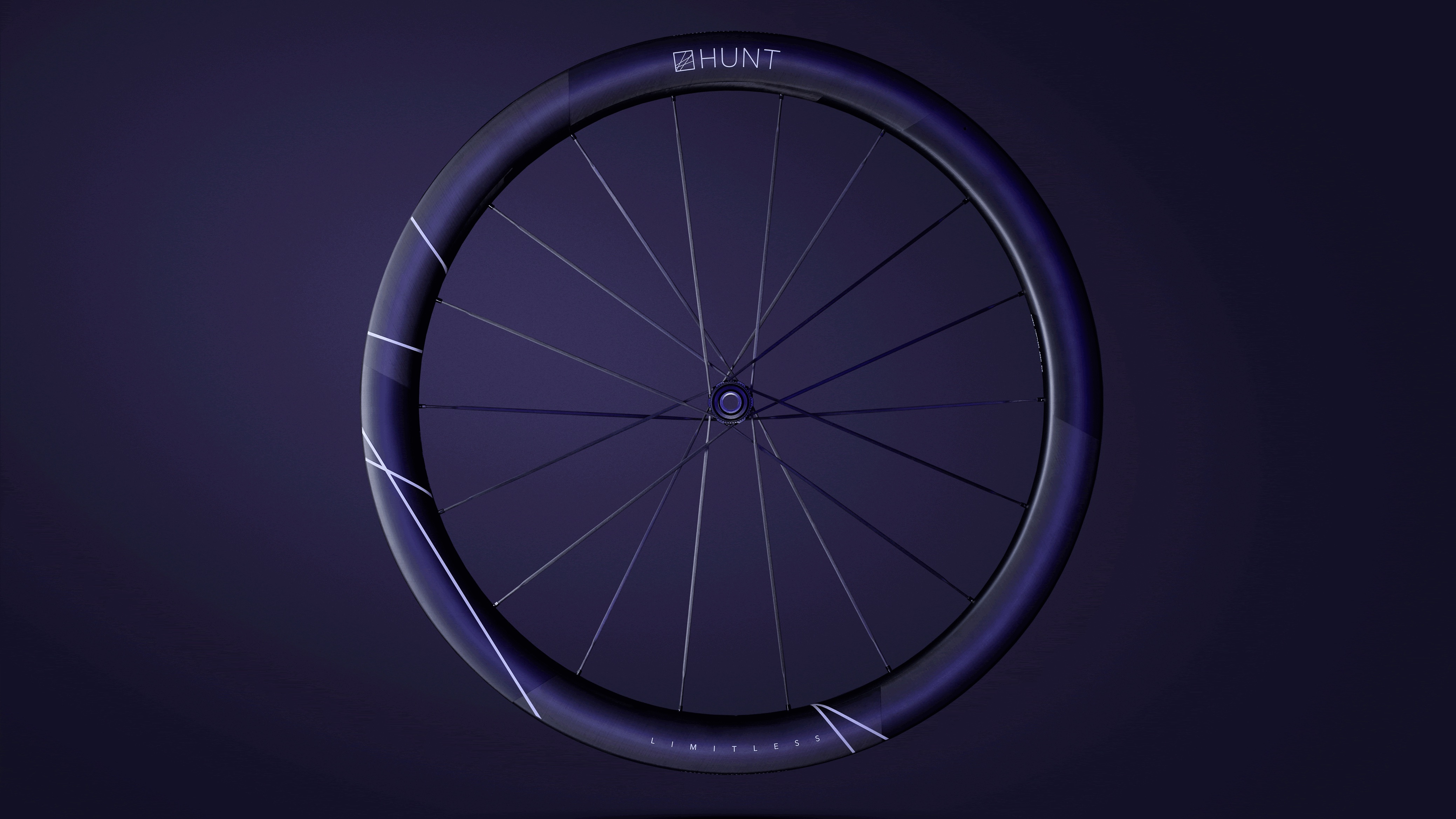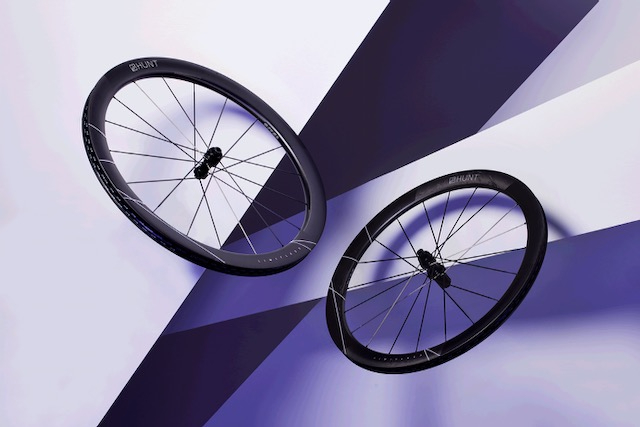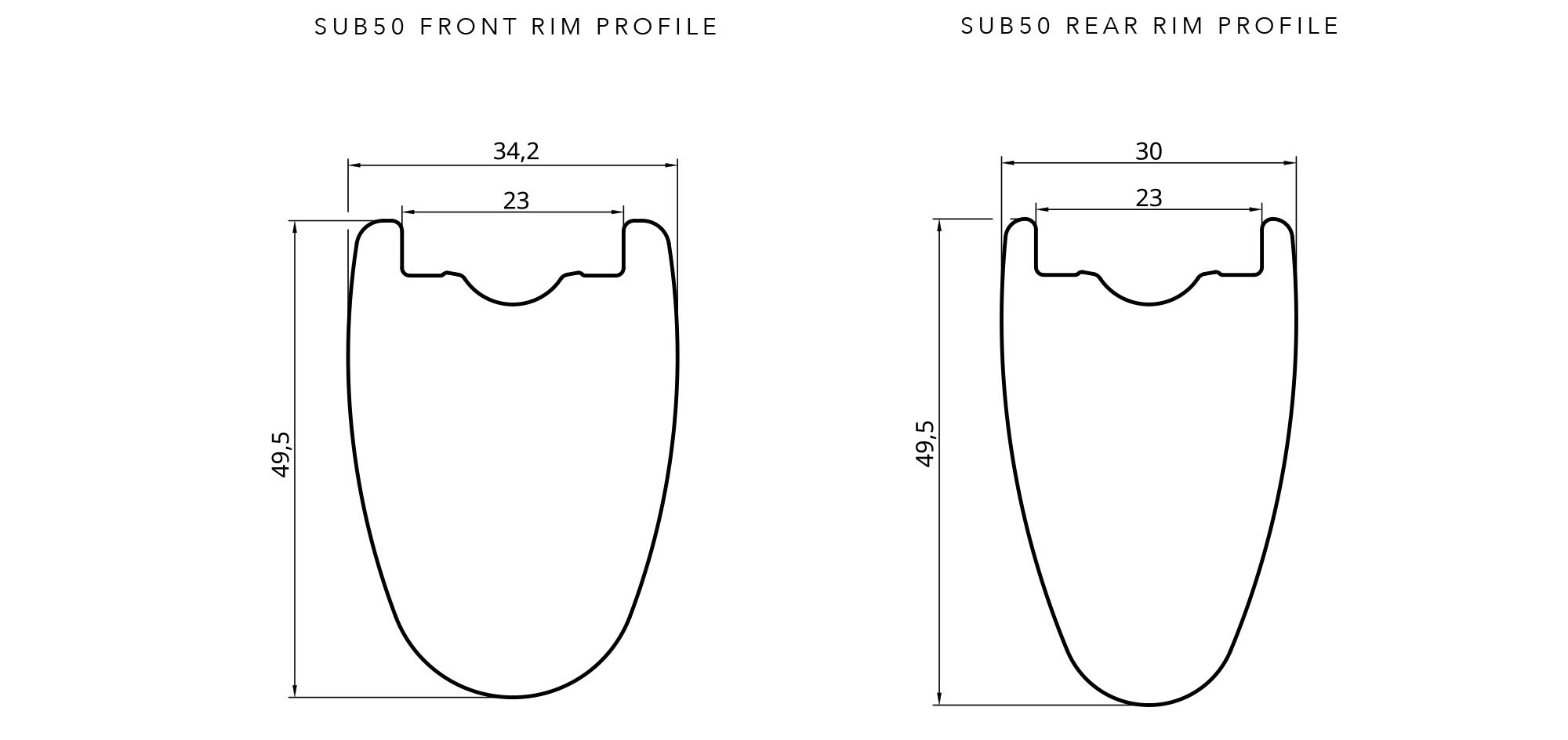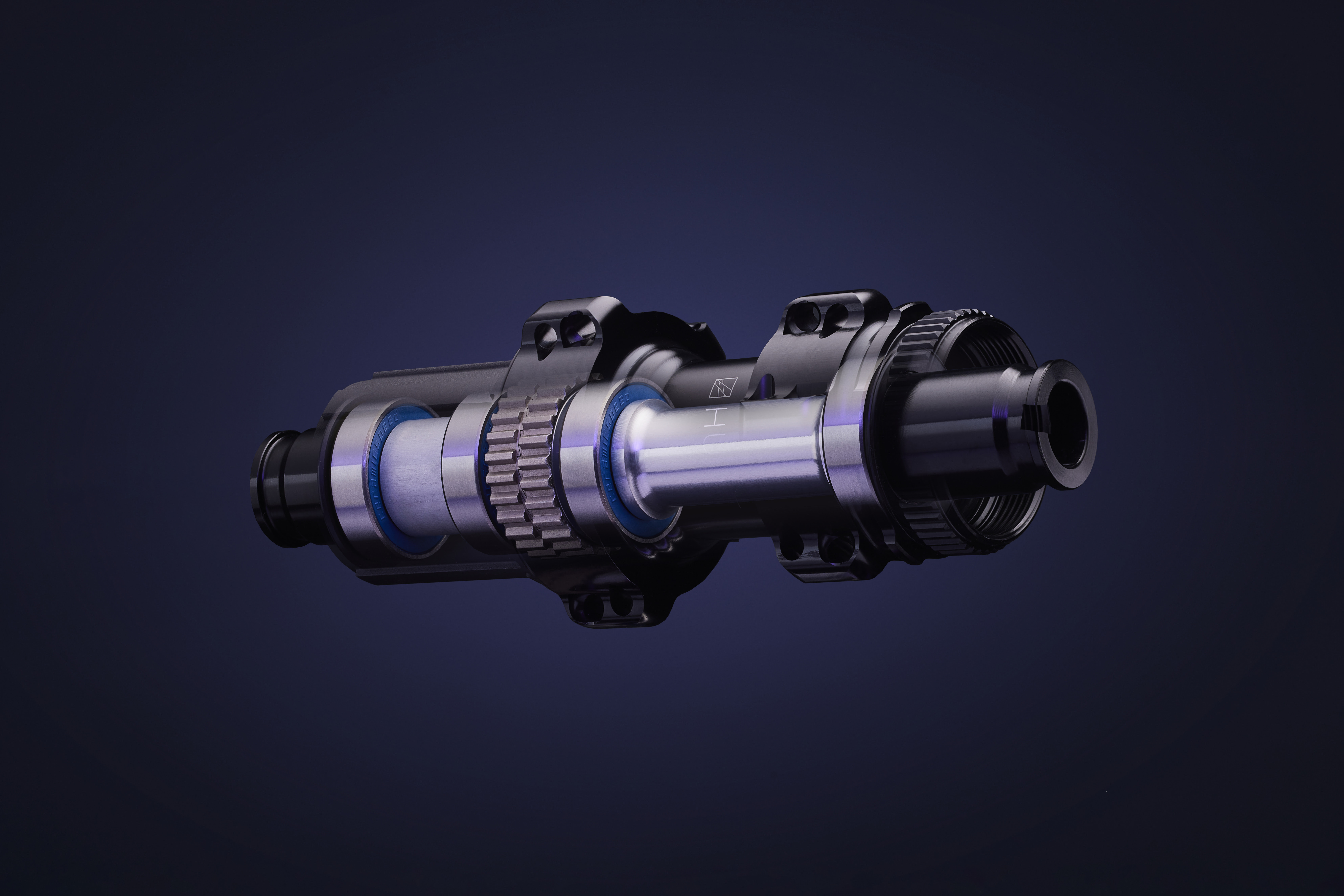All new Hunt SUB50 Limitless wheels follow bike trends: Aero up front, lighter at the rear
The wheelset is claimed to be the fastest of 50mm or lower depth

As race bikes seem to be converging on a single focus, so wheels seem to be slowly following suit. We see far fewer riders opt for crazy deep wheelsets in an effort just to cheat the wind, and we also see far fewer opting for extremely shallow climbing wheels. Hunt’s all-new SUB50 Limitless wheels very much fit into this trend, aiming to be the fastest wheel option for the majority of riders for the majority of situations.
Hunt claims the SUB50 is the fastest wheelset up to and including 50mm deep, when you consider drag-to-weight and drag-to-depth ratios, rather than outright wattage at a specified yaw and speed. 23mm internal widths front and rear are certainly wide, but the rear rim’s 34.2mm external width is extremely chunky, but actually a hair narrower than the current Hunt 48 Limitless wheelset. The wheels are optimised for 28-30mm tyres, but from our reading of the extensive press material and white paper created by Hunt, there is a leaning towards 30mm being the favoured width.

New rim profiles
Hunt already has a pair of wheelsets that straddle the 50mm depth. The Hunt 48 Limitless, and the Hunt 60 Limitless. Given the SUB50 is only 1.5mm deeper than the 48 Limitless it may not be a surprise to find that that wheelset is phased out in the future. The 48 Limitless was also claimed to be the fastest sub-50 mm wheelset.
The SUB50 differs from the 48 in that it has differing front and rear profiles, as seen below. Both rims are 49.5mm deep, but the front wheel is wider, with a more pronounced U-shape, whereas the rear is narrower (34.2mm plays 30mm). This narrower rear profile is an effort to shave grams, reducing the overall system weight to 1,380g, or 1,428g if you swap the carbon spokes for steel ones. This is a 238g saving over the 48 Limitless.
Given the air flowing over the rear is turbulent and dirty, Hunt has opted to prioritise weight savings at the rear, sacrificing a bit of drag reduction. This is very much in keeping with the design philosophy we’re seeing on many new bikes, where aero savings are made at the leading edges, and weight savings are made at the rear.

Wider rims for wider tyres
As the shackles of rim brakes have been cast off, bikes have slowly been moving towards wider tyres. While Soudal Quick-Step is still sticking to 26mm tyres with inner tubes, many of us are using 28mm and dabbling in 30mm. In an effort that seems to be aiming to get ahead of the curve, the included data shows that the wattage differential between the SUB50 and competitor wheels is greater with a 30mm tyre, showing that this is likely the basket into which the designers have placed their aerodynamic eggs.
The external width, especially at the front, is market-leading, but the internal width is the key point. The 48 Limitless has a 22.5mm internal width, whereas the SUB50 pushes the hookless internals out to 23mm. This is an effort to counteract wider tyres being pinched inwards, creating a ‘lightbulb’ shape.
Get The Leadout Newsletter
The latest race content, interviews, features, reviews and expert buying guides, direct to your inbox!

New hub internals
The hub shell doesn’t appear to have changed a great deal, still being machined from 6066 aluminium alloy. The main change is the switch from a ratchet and pawl system as seen on the 48 Limitless, to a double ratchet system as is common within wheels from the likes of DT Swiss. The 9-degree engagement is slightly larger than the 7.5 degrees found with the pawl system, but it seems engagement has taken a hit to improve ease of servicing, reliability, and performance under high loads.
Go slower to go faster
As with other Hunt releases in the past few years there’s a lot of data to sift through, more than can reasonably be detailed in a news article without diving into physics. One thing that is worth discussing is the effect of speed on average yaw angles. Hunt says that the SUB50 outperforms its competitors when the drag is viewed in relation to the depth and also to the weight, but it focuses on how the wheels perform at greater average yaw angles.
Effectively Hunt claims that the SUB50 wheelsets are faster than competitor wheels at wider yaw angles, and the slower you ride the wider your average yaw angle is going to be, and therefore the greater the benefit that you’ll gain. The slower you ride the more you’ll gain is certainly a novel strategy, but it does at least seem like the wheels at least have an eye on the speeds us mortals can ride at, rather than just the 45kmh averages that the pros can maintain with seeming ease.
Pricing, specs, and availability
- Weight: 1380g per pair
- Internal Rim Width: 23.0mm
- External Rim Width: 34.2mm Front | 30mm Rear
- Spokes: TaperLock UD Carbon
- Spoke Count: 18 Front | 20 Rear
- Hubs: HUNT H_Ratchet DBL, 40T, 9-degree engagement
- Bearings: CeramicSpeed, double-sealed OR Double-sealed stainless steel cartridge
- Pricing:
- £2,289 | $2,789 | €2,749 - Ceramic Speed Bearing
- £1,849 - Double-sealed stainless steel cartridge bearings
- * We don't currently know when the stainless steel spoke option will be available.

Will joined the Cyclingnews team as a reviews writer in 2022, having previously written for Cyclist, BikeRadar and Advntr. He’s tried his hand at most cycling disciplines, from the standard mix of road, gravel, and mountain bike, to the more unusual like bike polo and tracklocross. He’s made his own bike frames, covered tech news from the biggest races on the planet, and published countless premium galleries thanks to his excellent photographic eye. Also, given he doesn’t ever ride indoors he’s become a real expert on foul-weather riding gear. His collection of bikes is a real smorgasbord, with everything from vintage-style steel tourers through to superlight flat bar hill climb machines.